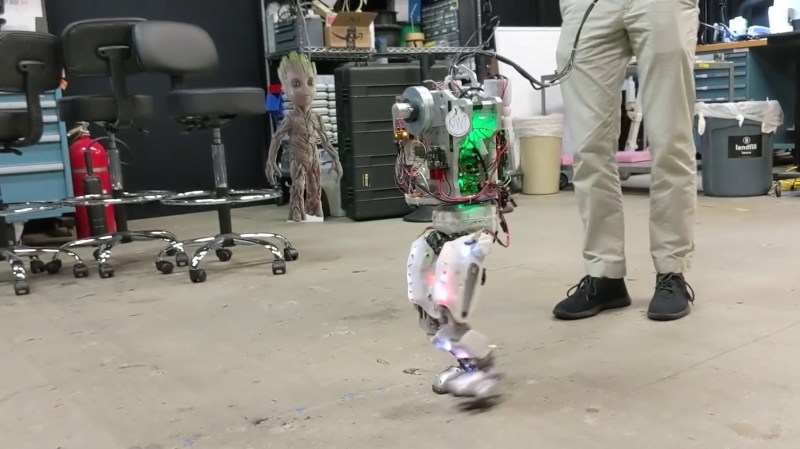Community, Leadership, Experimentation, Diversity, & Education
Pittsburgh Arts, Regional Theatre, New Work, Producing, Copyright, Labor Unions,
New Products, Coping Skills, J-O-Bs...
Theatre industry news, University & School of Drama Announcements, plus occasional course support for
Carnegie Mellon School of Drama Faculty, Staff, Students, and Alumni.
CMU School of Drama
Tuesday, April 27, 2021
Disney Imagineering’s “Project Kiwi” Bears Groot
Hackaday: Some days, we might be forgiven for believing Boston Dynamics has cornered the market on walking robots. They (and other players) are making incredible progress in their field, but three years ago Disney, trying to create autonomous, free-walking robotic actors for some of their more diminutive film characters, found none of the existing platforms were appropriate.
Subscribe to:
Post Comments (Atom)

3 comments:
This is some of the most advanced animatronics I have seen when it comes to the entertainment industry, and it is no surprise that it is coming out of Disney Imagineering. They have made incredible advancements when it comes to their stationary effects, and continue to amaze many with them, but a bipedal robot is a whole different level. The controls necessary in order to achieve the proper balance is already absurd, but then to make it smooth enough to mimic lifelike motion is even crazier. This also opens up a whole new world when it comes to themed entertainment. Effects and rides that would otherwise be too dangerous for actors are now possible. Another benefit to this is the ability to better resemble cartoon characters, something that furthers the Disney brand. Of course, humans won't be replaced any time soon, since there never will be a way to really mimic human interaction.
Wow that is absolutely insane. I can’t even imagine going into a park and seeing groot walk by except that he’s really the size of a toddler. While it’s still not in the parks yet, I’m certain it will be here before we know it. The crazy part to me isn’t just that it is able to walk on it’s own, I think it’s the movement combined with all of the facial expressions it’s able to make that essentially make Groot look alive. Even the traditional characters in the park such as Mickey and Goofy have eyes that can’t blink and mouths that can’t move. The only other characters I can think of that have some facial expressions are the cars in Carsland, but still not to the extent that was shown in the Groot video. The video itself was really interesting because we could see the progress made over 2-3 years in under 2 minutes. It’s amazing to see how the movement evolved.
Only Disney could do something like this, WOW. This is definitely some fo the most advanced animatronics / robotics that I have seen not just in the entertainment industry but period the fluidity of the movement is truly organic like. I imagine if you were to show the last clips of the video of Groot moving with out explaining to someone they might just fall for it being CGI or some sort of digital inlay. I mean when you see the detail views of the system as well the simple movement of the legs and the articulation. I think the most impressive parts are the clips at the beginning under no load where the legs are able to show their full speed and movement on their own with no surface or body to have to worry about counterbalancing. It makes you just wonder how far off is Disney from replacing CGI elements with robotics and creating systems that can adapt and be implemented in real time.
Post a Comment